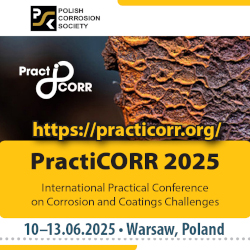Open Access (Artykuł w pliku PDF)
Open Access (Article in English PDF file)
Preliminary analysis of the leachability of organic compounds into surface waters from waste reclaimed asphalt
mgr inż. Natalia Gasik-Kowalska, Politechnika Warszawska, Wydział Budownictwa, Mechaniki i Petrochemii
ORCID: 0009-0008-4972-4487
dr inż. Paweł Grabowski, Politechnika Warszawska, Wydział Budownictwa, Mechaniki i Petrochemii
ORCID: 0000-0001-8918-4624
dr Piotr Gryszpanowicz, Politechnika Warszawska, Wydział Budownictwa, Mechaniki i Petrochemii
ORCID: 0000-0003-1355-7732
Adres do korespondencji: Ten adres pocztowy jest chroniony przed spamowaniem. Aby go zobaczyć, konieczne jest włączenie w przeglądarce obsługi JavaScript.
DOI: 10.15199/33.2024.06.08
Studium przypadku
Streszczenie. Rozporządzenie Ministra Środowiska z 2021 r. pozwala na zdjęcie statusu odpadu z destruktu asfaltowego. Materiał taki musi jednak spełniać wytyczne dotyczące m.in. zawartości zanieczyszczeń organicznych, w szczególności wielkocząsteczkowych węglowodorów aromatycznych (WWA). Zastosowanie materiału bez odpowiedniej analizy może wiązać się z wieloma zagrożeniami w stosunku do istniejących ekosystemów, w tym wodnych. W artykule zaprezentowano wyniki analizy wymywalności związków organicznych do ekosystemu wodnego. Przedstawiono wyniki badań próbek destruktów asfaltowych pobranych z 10 ulic w obrębie miasta Płocka. Badania realizowano pod kątem analizy właściwości chemicznych mogących stanowić potencjalne zagrożenie dla środowiska.
Słowa kluczowe: destrukt asfaltowy; środowisko naturalne; status odpadu; zanieczyszczenia.
Abstract. The Regulation of theMinister of the Environment of 2021 allows for the removal of the waste status from reclaimed asphalt. However, such a material must meet guidelines regarding, among others, the content of organic pollutants, in particular polycyclic aromatic hydrocarbons (PAHs). Unfortunately, the use of material without analysis may involve a number of threats to existing ecosystems, including aquatic ecosystems. In the arcticle the authors present the results of the analysis of the leachability of organic compounds into the aquatic ecosystem. The results of testing samples of reclaimed asphalt for 10 streets in the city of Płock are presented. The research were carried out to analyze chemical properties that could pose a potential threat to the environment.
Keywords: reclaimed asphalt; natural environment; waste status; pollution.
Literatura
[1] PN-EN 13108-8:2016-07 Bituminousmixtures –Material specifications – Part 8: Reclaimed asphalt.
[2] Alenowicz J. Czym jest obecnie „destrukt asfaltowy”? Zmiany w normie EN 13108-8. Drogownictwo. 2017.
[3] Rozporządzenie Ministra Klimatu i Środowiska z 23 grudnia 2021 r. w sprawie określenia szczegółowych warunków utraty statusu odpadów dla odpadów destruktu asfaltowego.
[4] Król J. Nowe rozporządzenie w sprawie utraty statusu odpadów destruktu asfaltowego. Drogownictwo. 2021.
[5] Zhao S,Huang B, ShuX,WoodsM. Comparative evaluation of warm mix asphalt containing high percentages of reclaimed asphalt pavement. Construction and Building Materials. 2013. h t t p s : / / d o i . o r g / 1 0 . 1 0 1 6 / j . c o n b u i l d - mat. 2013.03.010.
[6] Guo N, You Z, Zhao Y, Tan Y, DiabA. Laboratory performance of warm mix asphalt containing recycled asphalt mixtures. Construction and Building Materials. 2014. https://doi. org/10.1016/j. conbuildmat. 2014.04.002.
[7] Yousefi A, Behnood A, Nowruzi A, Haghshenas H. Performance evaluation of asphaltmixtures containingwarmmix asphalt (WMA) additives and reclaimed asphalt pavement (RAP). Construction and Building Materials. 2021. https://doi. org/10.1016/j. conbuildmat. 2020.121200.
[8] Zhang K, Huchet F, Hobbs A. A review of thermal processes in the production and their influences on performance of asphaltmixtures with reclaimed asphalt pavement (RAP). Construction and Building Materials. 2019. https://doi. org/10.1016/j.conbuildmat.2019.02.057.
[9] GianiMI, Dotelli G, Brandini N, Zampori L. Comparative life cycle assessment of asphalt pavements using reclaimed asphalt, warm mix technology and cold in-place recycling. Resources, Conservation and Recycling. 2015. https://doi.org/10.1016/j.resconrec. 2015.08.006.
[10] HasanMRM,You Z,Yang X.Acomprehensive review of theory, development, and implementation of warm mix asphalt using foaming techniques. Construction and Building Material. 2017. https://doi.org/10.1016/j. conbuildmat. 2017.06.135.
[11] Vidal R,Moliner E,Martínez G, RubioMC. Life cycle assessment of hot mix asphalt and zeolite- based warm mix asphalt with reclaimed asphalt pavement. Resources, Conservation and Recycling. 2013. https://doi. org/10.1016/j. resconrec. 2013.02.018.
[12] Williams Brett A, Willis J. Richard, Shacat J. Asphalt pavement industry survey on recycled materials and warm-mix asphalt usage: 2019. 2020. https://doi. org/10.13140/RG. 2.2.21946.82888.
[13] Yu B, Lu Q. Life cycle assessment of pavement: Methodology and case study. Transportation Research PartD: Transport and Environment. 2012. https://doi.org/10.1016/j. trd. 2012.03.004.
[14] Yang Q, Yin H, He X, Chen F, Ali A, MehtaY, Yan B. Environmental impacts of reclaimed asphalt pavement on leaching of metals into groundwater. Transportation Research Part D: Transport and Environment. 2020. https://doi. org/10.1016/j. trd. 2020.102415.
[15] Chen J,Wu J,Wang H, Xu G. Evaluation of asphalt effect on water quality using leaching test and molecular simulation. Journal of Testing and Evaluation, 46 (5), 2121-2129. 2018. https://doi. org/10.1520/JTE20170010
[16] Brantley AS, Townsend TG. Leaching of pollutants from reclaimed asphalt pavement”. Environmental Engineering Science. 1999. https://doi. org/10.1089/ees. 1999.16.105
[17] Birgisdottir H, Gamst J, Christensen TH. Leaching of PAHs from hot mix asphalt pavements. Environmental Engineering Science. 2007. https://doi.org/10.1089/ees.2005.0135.
[18] Spreadbury CJ, Clavier KA, LinAM, Townsend TG.Acritical analysis of leaching and environmental risk assessment for reclaimed asphalt pavement management. Science of the Total Environment. 2021. https://doi. org/10.1016/j. scitotenv. 2021.145741.
[19] Liu J, BorstM. Performances of metal concentrations fromthree permeable pavement infiltrates. Water research. 2018. https://doi. org/10.1016/j. watres. 2018.02.050.
[20] LegretM, Odie L, Demare D, JullienA. Leaching of heavy metals and polycyclic aromatic hydrocarbons from reclaimed asphalt pavement. Water Research. 2005. https://doi. org/10.1016/j. watres. 2005.06.017.
[21] Xu M, Zhang Y. Analysis of leachate contaminants metals in polyphthalamide-modified asphalt and their environmental effects. Journal of Cleaner Production. 2020. https://doi. org/10.1016/j. jclepro. 2020.123239.
[22] Brandt HCA, De Groot PC. Aqueous leaching of polycyclic aromatic hydrocarbons from bitumen and asphalt. Water research. 2001. https://doi.org/10.1016/S0043-1354 (01)00216-0.
[23] Guo R, Zhang H, Tan Y. Influence of salt dissolution on durable performance of asphalt and Self-ice-melting asphalt mixture. Construction and Building Materials. 2022. https://doi. org/10.1016/j.conbuildmat. 2022.128329.
[24] Kozioł W, Ciepliński A, Borcz A. Kruszywa w budownictwie. Cz. 1. Kruszywa naturalne. Nowoczesne Budownictwo Inżynieryjne. 2015; (4): 98-100.
[25] PN-EN 12697-27:2017-07 Mieszanki mineralno- asfaltowe – Metody badań – Część 27: Pobieranie próbek. Bituminous mixtures – Test methods – Part 27: Sampling.
[26] Mill T, Tse D, Loo B, Yao C, Canavesi E. Oxidation pathways for asphalt. Prepr.ACS Div. Fuel Chem, 37 (3). 1992.
[27] Ferrarese E, Andreottola G, Oprea IA. Remediation of PAH-contaminated sediments by chemical oxidation. Journal of Hazardous Materials. 2008. https://doi.org/10.1016/j.jhazmat. 2007.06.080.
[28] Rivas FJ. Polycyclic aromatic hydrocarbons sorbed on soils: a short review of chemical oxidation based treatments. Journal of Hazardous Materials. 2006. https://doi. org/10.1016/j. jhazmat. 2006.07.048.
Przyjęto do druku: 22.05.2024 r.
Materiały Budowlane 6/2024, strona 36-41 (spis treści >>)































